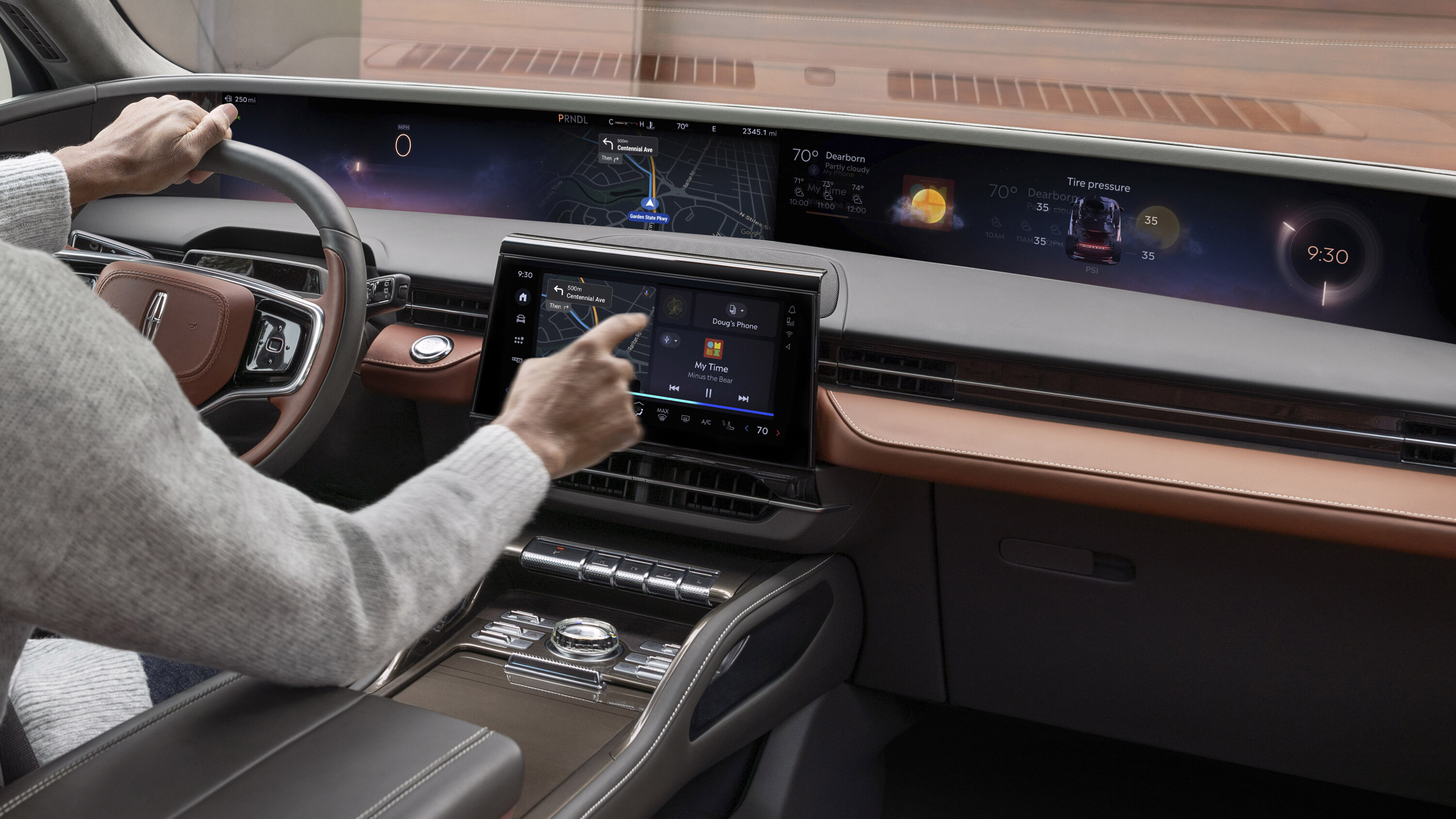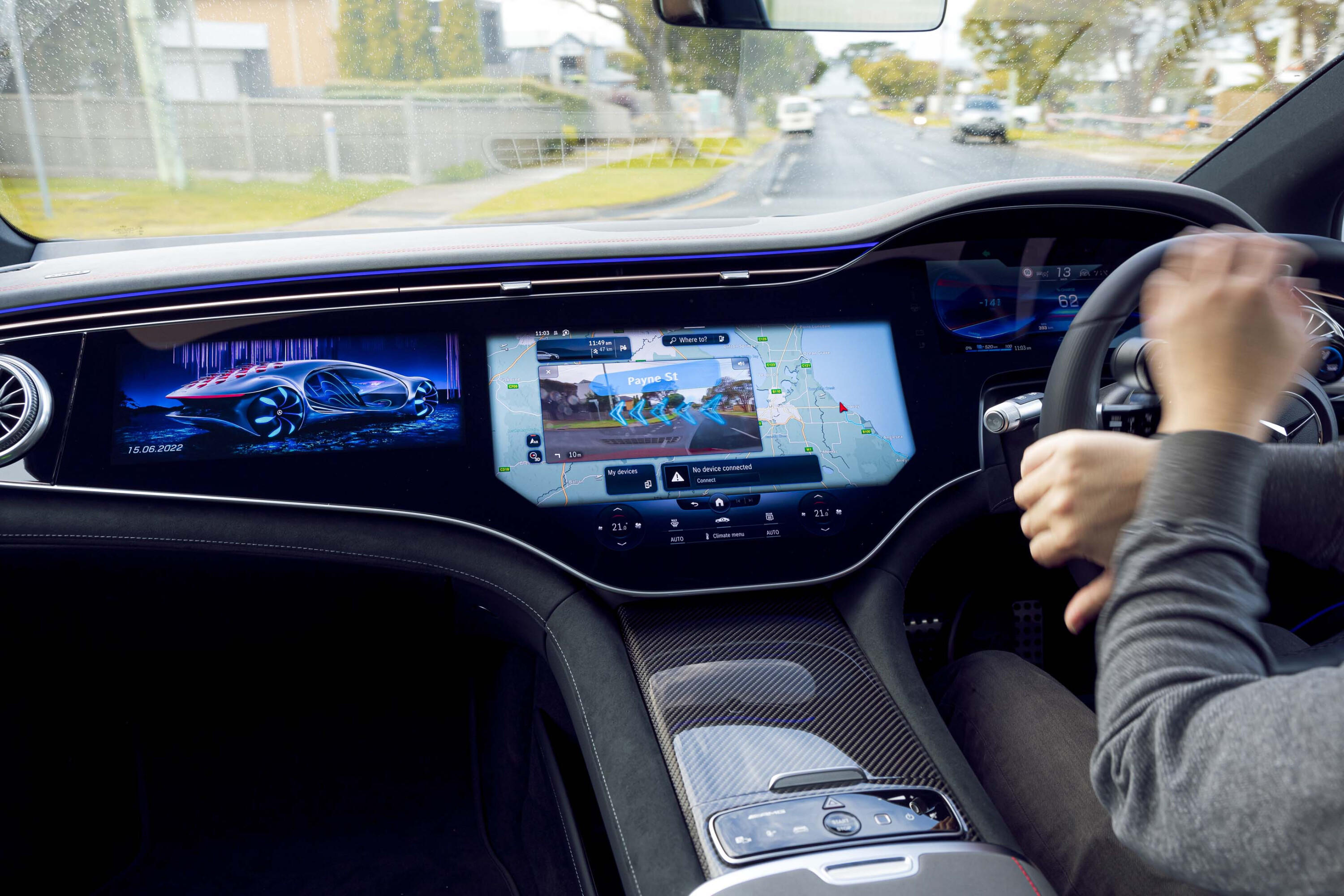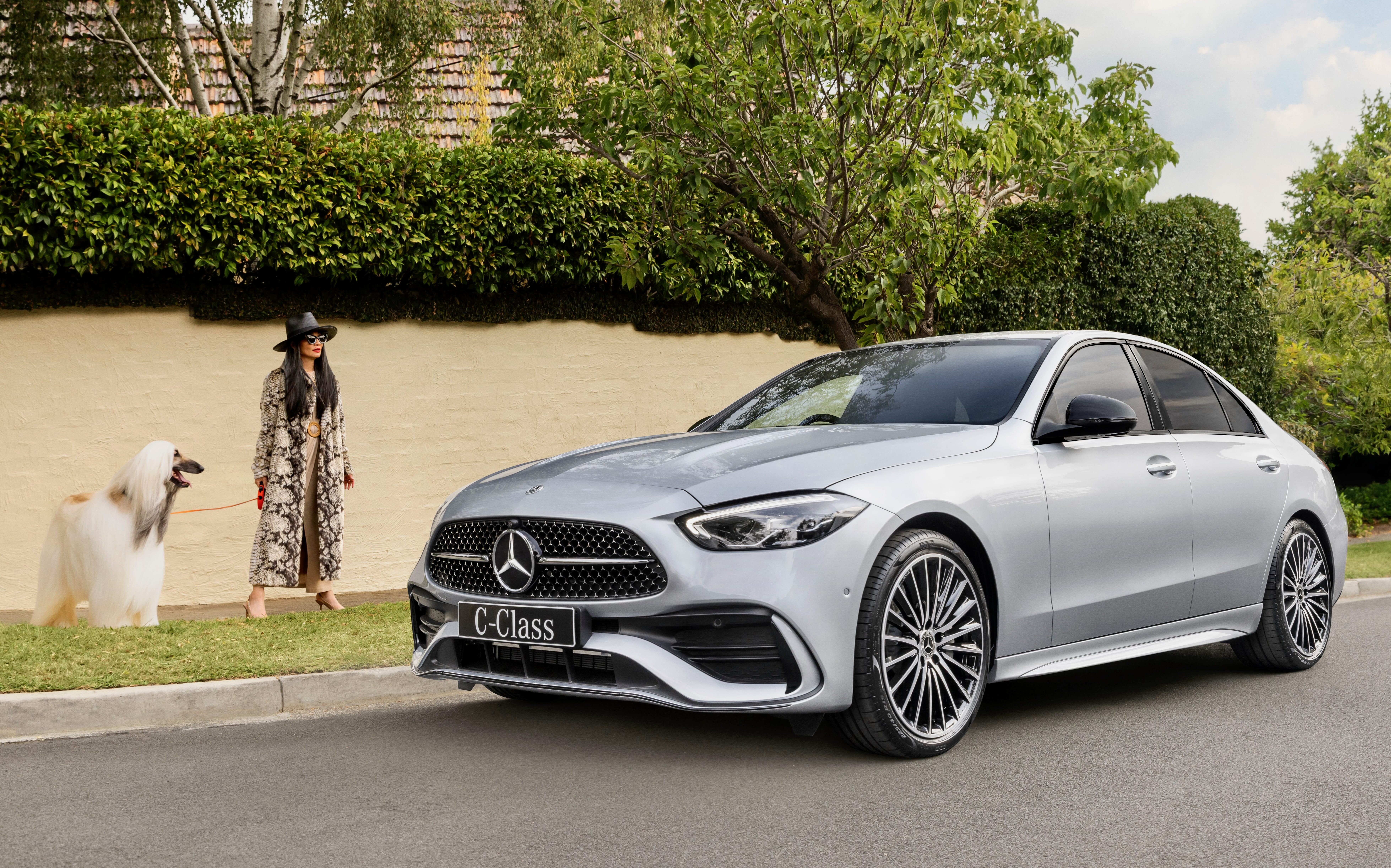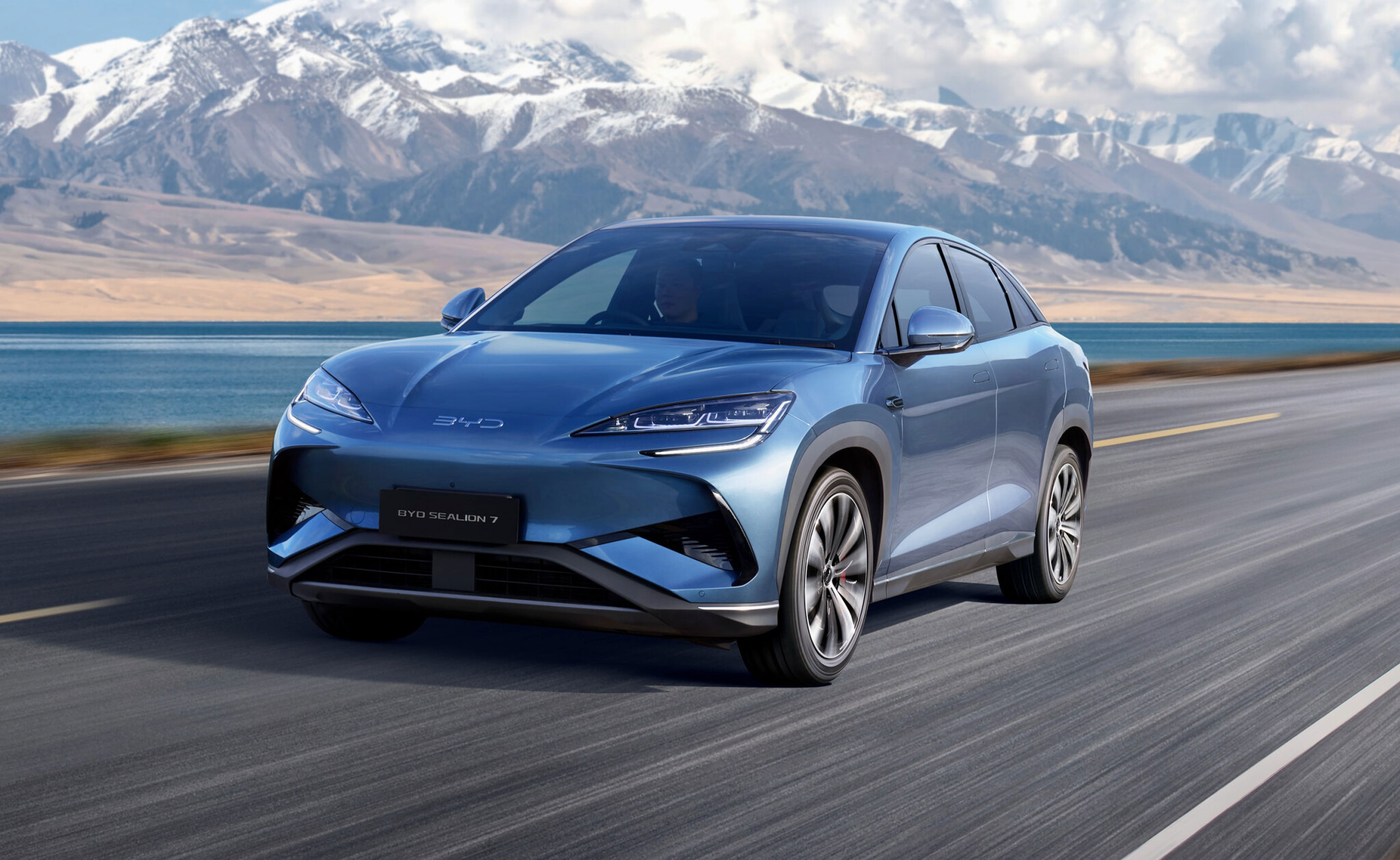
If Ford’s new infotainment system reminds you of the ‘Yo dawg’ meme, you probably aren’t alone. The big brains at Ford heard you like screens, so they’ve put screens behind screens so you can… well, the line writes itself.
Ford’s new-generation infotainment system leaves Blackberry QNX behind to embrace Android Automotive, and has debuted today in the new Lincoln Nautilus.
The ‘Ford and Lincoln Digital Experience’ is overflowing with Google features, including Maps and Assistant, along with Amazon Alexa and Amazon Prime Video – the latter features forming part of an ongoing partnership with the online retail giant.

Most of this will be displayed on the massive curved 48-inch display – technically two screens butted together – and users will be able to control many of the features through voice command, although the smaller touch screen will remain the most direct path to the system’s full capability.
The rest of the massive display is effectively a dashboard of oversized phone widgets, with the demonstration showing a huge weather panel, an extra large version of the usual tyre pressure monitoring screen, and a huge clock.
In a sense, Ford has taken all the features you’d find on a ‘regular’ driver display – 12.3 inches seems to be the norm these days – enlarged each element, and plastered it across a canvas nearly four times wider.

This isn’t especially unusual: Mercedes-Benz has recently made a similar land grab on its dashboard real estate – particularly in its flagship EQS sedan, with an even larger 55.5-inch system.
Screens are the new mark of progress and luxury.
It’s unclear just how big a role market demand is playing in the increasing size of and reliance on touchscreen systems, although a study in 2022 found physical buttons to be safer than screen and voice controls. (A ‘no shit’ moment for many in our Facebook comments.)
Are you for safety or aren’t you?
There’s a contradiction playing out in automotive at the moment, as brands claim a fierce commitment to safety, while loading cabins with increasingly distracting displays that wreak havoc on the most basic aspects of human attentiveness.
Some governments are moving to discourage interaction with phone screens and built-in displays, with Victoria making it illegal from 2023 to touch any screen unless the vehicle is parked.
Responsibility shift: Blaming the user
Focusing on driver responsibility leaves brands free to go wild on tech.
It’s clear that while government rightfully penalises road users for using their car’s features irresponsibly, there has been limited action in shaping policies around the capabilities of the screens themselves – beyond making it illegal to play video in view of the driver while the car is in motion.




